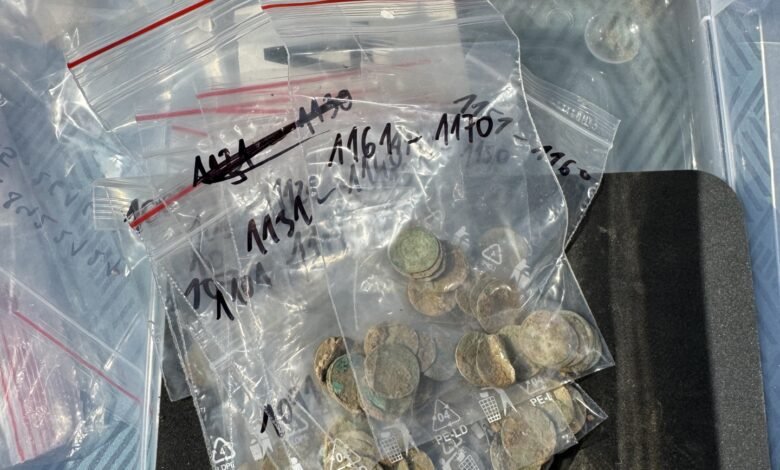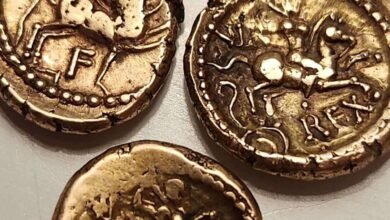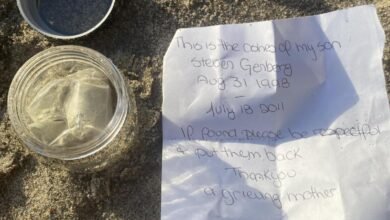Woman goes for a walk and accidentally discovers a huge 900-year-old treasure

If you’ve been trying to convince yourself to exercise more lately, consider the recent case of a woman in the Czech Republic who, while out for a walk one day, accidentally found a treasure of more than 2,150 silver coins dating back over 900 years.
It is a discovery “that can be compared to winning a million-dollar jackpot,” said Filip Velímský, an archaeologist at the Academy of Sciences of the Czech Republic in Prague, in a statement translated from Czech.
The stock of silver coins represents “a huge amount,” he explained, “unimaginable for a normal person and at the same time priceless.”
So why would such a wealth remain hidden for 900 years? Experts from the Czech Silver Museum and the Prague Institute of Archaeology of the Academy of Sciences of the Czech Republic have a few theories: They suspect that the silver was originally intended for soldiers, or it could even be some kind of war booty. That would make sense: Prague may be a tourist hotspot today, known for its unparalleled beauty and beer, but things weren’t always so rosy in the Czech capital.
If you go back about a millennium, to the time when the coins were minted, you find yourself in the turbulent era of the House of Přemysl – and yes, we know how game of Thrones that name sounds strange, but seriously: Between the year 999, when Boleslav the Pious died, and the end of the 12th century, when Ottokar I officially established Bohemia as a kingdom, Prague was essentially the epicenter of a near-constant family feud on a national level.
“[It] was probably placed [there] in the first quarter of the 12th century, in a time of domestic political instability,” explains Velímský. “At that time, there were disputes in the country between the members of the Přemyslid dynasty over the princely throne of Prague.”
The treasure was originally kept in a ceramic pot – but after nine centuries of land use, including ploughing, only the soil remained intact. The treasure itself, however, represents the largest collection of early medieval coins yet found in the region and includes coins from at least three monarchs from the 11th and 12th centuries.
Put them in some coke, it will make them shine.
Photo credit: ARCHEOLOGICAL ARCHITECTURE OF THE CR
The coins are now being processed and can hopefully be presented to the public in summer 2025. And there is a lot to do: “The museum staff will […] “We have to register all parts of the find in the collection,” explains Lenka Mazačová, director of the Czech Silver Museum in Kutná Hora. We also have to “ensure the cleaning of individual coins and any restoration work, as well as photograph them for publication and promotional purposes. […] including the creation of a detailed catalogue.”
But that’s not all. By analyzing the coins more closely, the experts will hopefully be able to find out not only who minted them, but also where. The silver from which the coins were forged can be traced back to its original mining location via the elements contained in the alloy. That’s why the coins will be subjected to X-ray and spectral analysis in the future to determine their exact composition.
And although it is no coincidence that a silver museum is located in this area – in the Middle Ages, about a third of Europe’s total silver production was handled here thanks to the rich natural deposits of the metal – Mazačová suspects a non-local origin: “The coins were most likely minted in the Prague mint from silver that was imported to Bohemia at the time,” she says.
Whatever the outcome, experts agree that the discovery is “one of the greatest finds of the last decade,” the statement said. And best of all for the lucky hiker who discovered it? She should receive about 10 percent of the value as a reward – not a bad haul for a random hike across a field.



